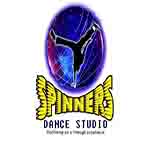Aerobics Dance class in Bengaluru
The Joy of Aerobics: Revitalise Your Body and Mind
Introduction: In today’s fast-paced world, maintaining a healthy lifestyle is crucial for overall well-being. One of the most effective ways to achieve this is through aerobics—a dynamic form of exercise that combines rhythmic movements with upbeat music. Whether you’re a fitness enthusiast or a beginner looking to kickstart your fitness journey, aerobics offers a multitude of benefits for people of all ages. This article delves into the world of aerobics, exploring its history, various forms, health advantages, and practical tips for getting started.
-
Origins and Evolution of Aerobics: Aerobics, derived from the Greek word “aer,” meaning air, and “bios,” meaning life, emerged in the 1960s as a response to the growing sedentary lifestyle and the need for cardiovascular fitness. Dr. Kenneth H. Cooper, a renowned exercise physiologist, popularized the concept of aerobics, emphasizing the importance of sustained physical activity to improve cardiovascular health. Over time, aerobics has evolved to encompass diverse styles such as high-impact, low-impact, step aerobics, water aerobics, dance-based aerobics like Zumba, and more.
-
Health Benefits of Aerobics : Engaging in regular aerobics workouts can have a profound impact on both physical and mental health. Here are some key benefits:
a. Cardiovascular Fitness: Aerobics significantly improves heart and lung function, increasing stamina and endurance.
b. Weight Management: Regular aerobic exercise aids in weight loss by burning calories and increasing metabolism.
c. Muscle Toning and Strength: Aerobics engages multiple muscle groups, contributing to overall muscle tone and strength development.
d. Stress Relief: Aerobics releases endorphins, the body’s natural feel-good hormones, promoting stress reduction and improving mood.
e. Improved Mental Health: Regular participation in aerobics can enhance cognitive function, memory, and overall mental well-being.
f. Disease Prevention: Aerobics reduces the risk of chronic illnesses such as heart disease, type 2 diabetes, and certain types of cancer.
History of Aerobics: Aerobics as a structured exercise regimen gained popularity in the 1960s and 1970s. The concept was pioneered by Dr. Kenneth H. Cooper, an American physician, who introduced the term “aerobics” in his book “Aerobics” published in 1968. Dr. Cooper emphasized the importance of cardiovascular fitness and developed a series of exercises and routines aimed at improving heart and lung health.
Aerobics is a form of physical exercise that combines rhythmic aerobic movements with stretching and strength training exercises. It is usually performed to music and involves continuous, repetitive movements to improve cardiovascular fitness, flexibility, and muscular endurance. The word “aerobics” is derived from “aerobic,” which means “with oxygen,” referring to the use of oxygen in the body’s energy-generating process during exercise.
Aerobics gained further recognition in the 1980s through the work of fitness instructor Jane Fonda, who released a series of exercise videos that popularized the practice. Fonda’s aerobic workouts combined dance-inspired movements with aerobic exercises, appealing to a wide audience and contributing to the widespread adoption of aerobics as a fitness activity.
Getting Started with Aerobics : Here are some practical tips for beginning an aerobics routine:
- Consult with a healthcare professional: If you have any underlying health conditions or concerns, consult your doctor before starting any new exercise regimen.
- b. Choose the Right Style: Explore different aerobics styles and find one that aligns with your interests and fitness goals. Consider trying different classes or online tutorials to discover what suits you best.
- c. Warm-up and Cool-down: Prior to each session, perform a warm-up routine to prepare your body for exercise. Afterward, cool down to gradually bring your heart rate back to normal and prevent injury.
- d. Start Slow and Progress Gradually: Begin with low-impact aerobics and gradually increase intensity and duration as your fitness level improves. It’s important to listen to your body and avoid overexertion.
- e. Find a Supportive Community: Joining an aerobics class or participating in group activities can provide motivation and a sense of community, making your fitness journey more enjoyable.
- f. Stay Hydrated and Fuel Your Body: Drink plenty of water before, during, and after your workout. Additionally, maintain a balanced diet to provide your body with the necessary nutrients for optimal performance.
Benefits of Aerobics:
-
Improved cardiovascular health: Regular aerobics exercise strengthens the heart and lungs, improving their efficiency in delivering oxygen to the body’s tissues. This helps reduce the risk of heart disease, lower blood pressure, and increase overall cardiovascular endurance.
-
Weight management: Aerobics is an effective calorie-burning exercise, which can aid in weight loss or weight maintenance. The continuous movements and increased heart rate during aerobic workouts help burn excess calories and reduce body fat.
-
Increased endurance and stamina: Aerobics enhances muscular endurance and stamina, allowing individuals to perform physical activities for longer periods without fatigue. Regular practice can improve overall energy levels and productivity in daily life.
-
Stress reduction: Engaging in aerobic exercise releases endorphins, which are natural mood enhancers and help reduce stress and anxiety. The rhythmic movements, music, and social interaction during aerobics classes can also contribute to improved mental well-being.
-
Improved flexibility and coordination: Aerobics incorporates stretching exercises that enhance flexibility and joint range of motion. The choreographed movements and repetitive patterns also improve coordination and balance.
-
Social engagement: Participating in aerobics classes or group workouts provides an opportunity to meet new people, socialize, and create a supportive fitness community. The group atmosphere can add motivation and enjoyment to the exercise routine.
Conclusion : Aerobics offers an invigorating and enjoyable path to a healthier lifestyle. With its numerous physical and mental benefits, aerobics can transform not only your body but also your outlook on life. By incorporating aerobics into your routine,



